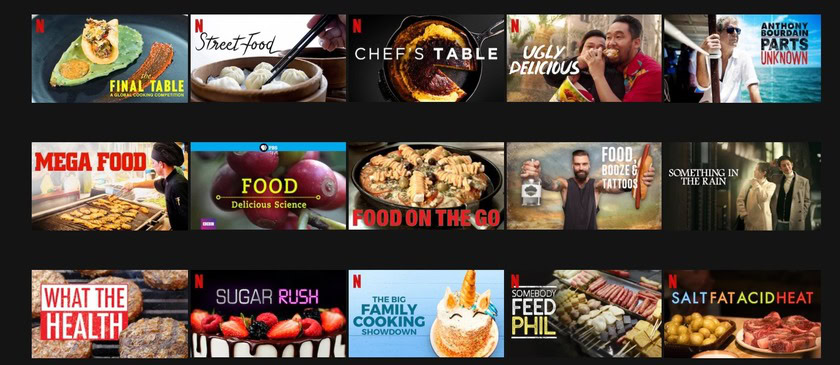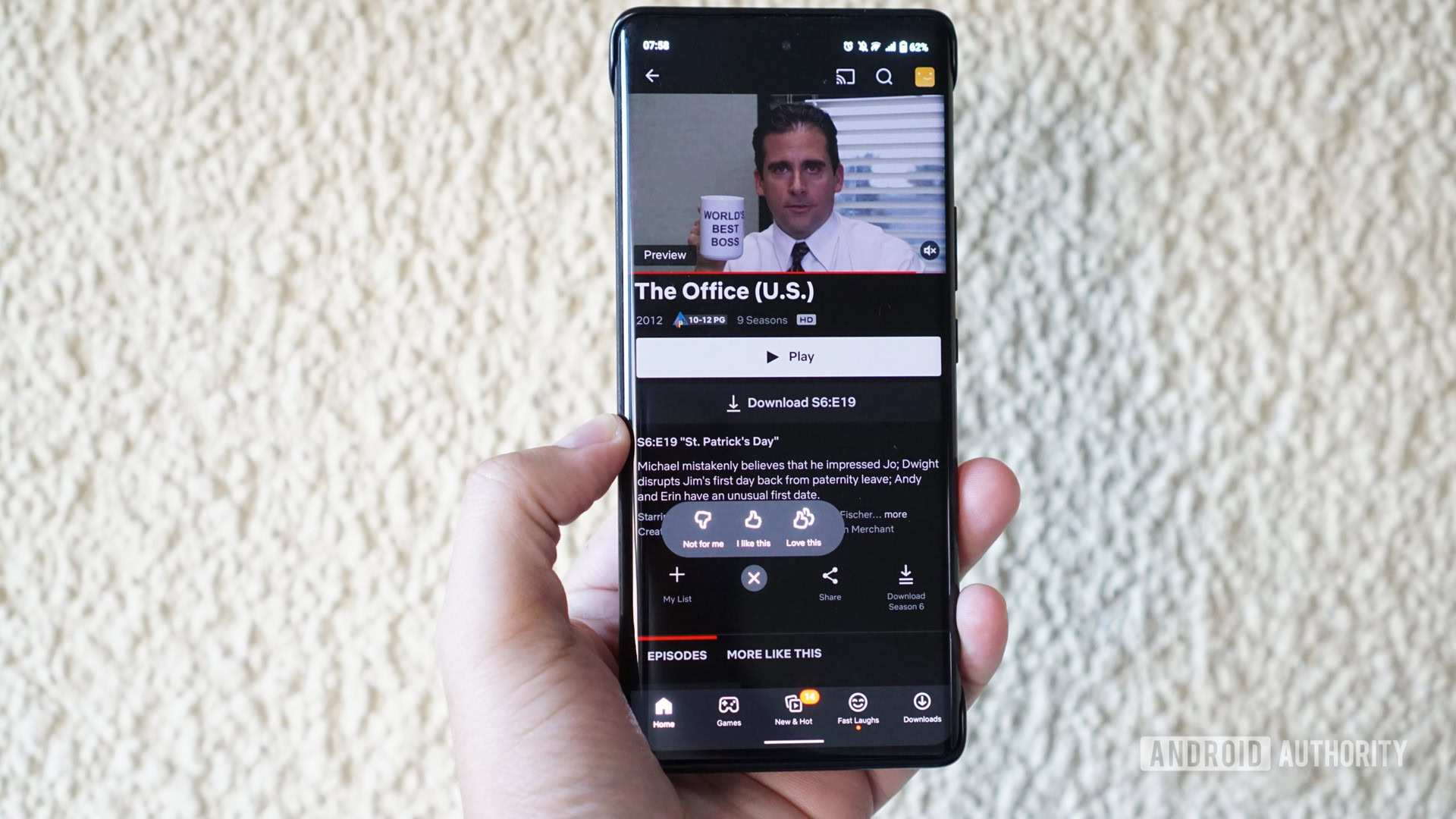Affiliate links on Android Authority may earn us a commission. Learn more.
Password sharing isn't killing Netflix, streaming fatigue is

Netflix took the world by surprise when it announced its first-ever drop in subscriber counts earlier this month. Dropping 200,000 subscribers after a decade of growth is no joke. The poster child of streaming services has been on a spree of content creation, acquisition, and subscriber growth for years. However, even if you leave aside the COVID-induced growth in memberships, and its subsequent slowdown, a drop in viewership was a long time coming. Call it subscription fatigue or a flawed content strategy, Netflix’s dip could be a cautionary tale and learning lesson for practically every streaming service. Here’s why.
Read more: Netflix has to choose between quality and quantity if it wants to stay on top
The problem of plenty

At the time of publishing, Netflix US reports over 2,247 TV shows and at least 3,846 movies. That’s more content than anyone could reasonably watch. And yet, finding content to enjoy continues to be a chore. That problem is further amplified when you consider the myriad of additional streaming services. In fact, the problem is so bad that doomscrolling Netflix has become a legit meme. The popularity of our own streaming suggestions for what to watch on Netflix this week shows that users just aren’t able to discover what to watch on the platform.
Now, it’s not as if Netflix hasn’t had its fair share of blockbuster hits. Shows like House of Cards, Dark, Ozark, Stranger Things, and even Bridgerton have become a part of the cultural zeitgeist. However, for every Stranger Things, the service commissions and very quickly cancels ten tween-led shows. The signal-to-noise ratio is far too skewed in the favour of derivative, samey content instead of blockbuster IPs that leave a lasting impact. It certainly doesn’t help that Netflix has a proclivity to drop content before giving it time to foster an audience. Hey Netflix, not every show can be Squid Games, nor does it have to be.
Shows like Squid Games and Stranger Things have become a part of the cultural zeitgeist, but they are one-offs amidst a glut of mediocrity.
Netflix’s glut of ‘good-enough’ to mediocre content reeks of a strategy that is aimed more at providing a vast quantity of filler content. Perhaps it is a remanent of the company’s DVD-rental past, but becoming the video library of the internet just isn’t a meaningful strategy anymore. While syndicated content keeps users on a platform, it takes meaningful original content to bring users to it. The battle for eyeballs means that the spotlight is back on quality over quantity. There’s only that much time that users have on their hands, and the rise of alternative services has finally given viewers multiple options like Apple TV Plus and HBO Max.
Netflix isn’t unaware of the problem. In its recent earnings call, the company said,” On the content side, we’re doubling down on story development and creative excellence.” The company reiterated, “Our plan is to reaccelerate our viewing and revenue growth by continuing to improve all aspects of Netflix — in particular, the quality of our programming and recommendations, which is what our members value most.”
That problem of mediocre content is further amplified by Netflix’s instant-gratification model. Early on, Netflix practically created the concept of binge-watching shows. Why wait a week for an episode when you can watch the entire season in one go? Sure, there’s a degree of instant gratification to be had from wrapping up a show on day one and being able to chat about it with friends. However, it risks shortening the product’s shelf life if the bar for the quality of content isn’t high enough. With nothing to keep users hooked and coming back to the service, there’s an inherent risk of alienation.
Instant gratification combined with mediocre content is the perfect recipe for losing mindshare.
Meanwhile, both HBO Max and Apple TV have switched back to a more traditional weekly cadence for episodic releases that keep subscribers hooked and returning to the platform. It helps build anticipation and keeps the audience engaged.
Interestingly, one service that appears to have struck a good balance between plentiful content and relative quality is Xbox Gamepass. In a conversation with my colleague Adam Birney, he attests that the monthly rotation and the curated selection of games have led to him discovering a lot of hidden gems. There’s still plenty to find, but the smaller curation means that it is a lot easier to actually get to that content.
Also check out: Xbox Gamepass: Everything you need to know
Apple TV appears to be following a similar model where shows are released at a slower pace and the focus is on quality instead of flooding the service with low-quality content. While I wasn’t a big fan of the limited library at launch, I’ve personally found practically every show to have engaging storylines that kept me hooked. The approach appears to be paying dividends for Apple as the company has crossed over 40 million active subscribers already despite having just 120 shows and movies on the platform.
Discoverability is key

My concerns with Netflix’s strategy, however, stretch beyond just the quality of content. Specifically, it is about discovering that content. The streaming company’s data-driven approach barely scratches the surface of its own content library. As a fan of horror cinema, I’m tired of being recommended the same range of popular movies like The Conjuring. I know that Netflix has deep cuts like The New Ways, but the award-winning movie has never been recommended to me despite my copious consumption of creepy content.
Our picks: The best movies on Netflix in many genres
Netflix’s data-driven approach works well at surfacing popular content. However, it can’t quantify the emotional aspect of cinema. Genre tags might suggest that two horror movies are bound to be clubbed together, but there’s so much more nuance involved. Bringing up suggestions based on popularly viewed content simply doesn’t work well enough to keep cinephiles hooked.
In contrast, despite being niche by nature and limited by appeal, Mubi guarantees a thought-provoking cinematic experience. This is mostly because of the human curation that goes behind selecting each movie added to the platform.
AI can't quantify the emotional aspect of content recommendations, human curation and user-generated playlists can help solve that.
Spotify, the Netflix of the music streaming world faces a similar issue, but it managed to circumvent it through user-led curation. These days, my preferred way to listen to music is via user playlists that do a far better job of introducing me to fresh artists than Spotify’s algorithms ever did. Predictably, easy access to better quality content keeps me hooked to the platform.
Related: Tips to make the most of your Spotify premium or free account
Coupled with the relatively limited high-quality content, it becomes all the more important to have a robust recommendation system that prioritizes discovery over watching the same content with a slightly different twist. Subscribers need to feel a sense of excitement and wonder every time they tune into the platform over the overwhelming deja vu that seems to cloud Netflix’s homepage.
Granular personalization

The content discoverability problem is also a byproduct of limited user interaction with content. Sure, you can mark a movie with a thumbs up or down, but that is hardly enough to quantify how much you liked it. Watch time is another commonly used metric, but I often consume movies in bite-sized packages.
Netflix has been experimenting with a double thumbs up to identify content that you truly enjoyed. However, a scale of one to five or a star-based rating might be a better approach to gaining more insights into viewer preferences.
Taking it a step further, the problem of customization is one that extends across streaming platforms. Netflix, Spotify, and most other platforms have no real option to filter content. For example, I have no interest in listening to remixes of some of my favorite tracks, nor do I want to hear content from compilation albums that are often tossed into my listening queue. Spotify offers no way to exclude these.
It's imperative for streaming services to stop being eager salesmen of mediocre content, and go back to being a librarian with thoughtful suggestions.
Extensive filtering or customization options go against the entire “keep it simple” paradigm of streaming services, but could very well be hidden away under an advanced settings menu. The fact of the matter is, no matter how good AI gets at predicting user interests, it simply can’t take into account the preferences of hundreds of millions of users. Even human curation can only go that far. Giving back controls to the users would be a great step forward towards stopping services from being an eager salesman, and going back to being a librarian or curators instead.
If it all seems obvious to you, perhaps it is. Netflix and Spotify blew up at a time when they had no competition whatsoever. However, the entry of deep-pocketed rivals with a legacy of original content creation was bound to put a spanner in Netflix’s growth, in particular. In the case of Spotify, the service has to constantly battle profitability, curation, and repeated attempts at being tastemakers.
The real battle lies ahead where most streaming platforms will have to make strategic decisions focused on user retention instead of a quick fix strategy to gain subscriptions that might not last all that long. And while alternate streaming services, like Apple TV, might have the leg up for the moment on content quality, they too risk heading towards the same future fraught with streaming fatigue unless steps are taken ahead of time.
Continue reading: What’s new on Netflix this month?